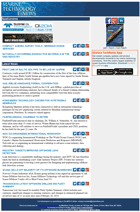Definition and Nature of Marine Engineering
What Is Marine Engineering?
Marine engineering extremely related to mechanical engineering; it is a broad field of work that encompasses all aspects related to the equipment (machineries and technology) on board of ships, boats, and other ocean and sea vessels. Marine engineers can focus on developing, maintaining, supervising and renewing technologies such as stroke engines, oil purifiers, RAC equipments, boilers, inner gas generators, pumps or electronics – radars, satellite transmitters and receivers, transponders, circuitry and many others.
Sea Going Marine Engineering
Sea going marine engineers, as the name suggests, carry out their activity mostly at sea. If you want to pursue a career in this particular field, keep in mind that entry qualifications are important and directly related to the position you will occupy, as well as to the remuneration and benefits. Personnel with no special qualification can also engage in sea going marine engineering activities, on new entry positions, providing that the employer offers some sort of on-the-job training program. Traditionally, the new entry position is cadet, which requires above five high school qualifications and the completion of the cadet training offers the possibility of receiving a higher degree. The completion of cadetship is mandatory in order to move up the ladder and have the possibility of achieving higher levels of certificates within the next years.
However, many states and countries have strict regulations regarding the necessary qualifications for the marine engineer position. Often, in order to become a marine engineer, one must have at least a bachelor degree in engineering, and most times a master’s degree in the same field is compulsory. Shore Based Marine Engineering Shore based marine engineering is a particular branch of naval architecture and marine engineering that mainly focuses on the design and development of vessels. Those willing to work in this field are either graduates from marine universities or sea going personnel who wish to work on shore. Candidates applying for shore based marine engineering positions are usually specialists with higher education in the fields of design, manufacture and operation of machinery, equipment, tools and devices for facilitating port traffic and coordinating the trajectory of ships at sea. The employees must also have important knowledge about the mechanization and automation of activities carried out inside the port, and protection of the environment. Mechanical engineers specialized in plant and port facilities can operate in many areas, such as harbor, shipyards, construction sites, workshops, design, repair and maintenance workshops, and education.
There are other shore based marine engineering related activities, such as marine architecture and naval science. Naval architects are responsible with the design and construction of various vessels from scratch while nautical science focuses on operating these vessels.
Areas of Specialization for Marine Engineers
Any ocean going vessel needs to have at least the following marine engineering positions (most of the times, an internationally recognized certification is required), which can only increase in number with the size and type of the ship, but not decrease, according to the Safe Manning certificate.
Chief Engineer – is usually responsible with all activity of the Marine Engineering Department, operation, maintenance and replacement of technical equipments, ensuring the conformity of the fleet vessels with the inner safety management system. The chief engineer needs to be experienced and have all necessary practical skills in order to keep the ship propelling and reach the port in the best condition. He takes all decisions regarding machinery and technology issues.
Second Engineer – is in charge with the machinery spaces and he has the second highest level of responsibility after the chief engineer. The second marine engineer executes all maintenance activities, is responsible for trouble shooting, safety and efficiency of the operations of all technology on a ship, as well as for the main propulsion machinery and other auxiliary technologies. His team consists of all the staff in the machine and engine rooms.
Third Engineer – plays an important role in the operation and management teams and also the role of shipboard safety officer. He is in charge with the well functioning of all boilers (including boiler water and cooling water testing), generators and some auxiliary technologies. The third engineer is the next in charge after the second engineer and is the latter’s main assistant in technology maintenance works.
Fourth Engineer – is the junior engineer, subordinated to the third marine engineer. He has the responsibility of supervising the engine room activity, all MARPOL related technologies and auxiliary machineries and the only one in charge with the sludge and bilge management.
Education and Training Requirements for Marine Engineers
Even though most positions require a bachelor degree in mechanical, ocean or marine engineering in order to be able to enter the field, many applicants with ongoing studies are also accepted on positions with a lower degree of responsibility, provided they are enrolled in undergraduate programs that include the study of mathematics, materials testing, mechanics, hydraulics, and electrical systems. Of course, better qualifications come together with higher salary and benefits, as well as with consistent possibilities of promotion. Usually, those who apply for marine engineering positions in the merchant marine are required to be licensed, which implies that they previously graduated from the U.S. Merchant Marine Academy or any of the six state marine academies. Not only should these candidates have competitive theoretical knowledge of marine engineering, but they also must pass the physical test and have some practical sea expertise. Practical expertise can also be achieved through on-the-job training programs offered by employers to all those who have a bachelor degree in other mechanical and civil engineering domains and want to change their field of work.














 December 2025
December 2025



